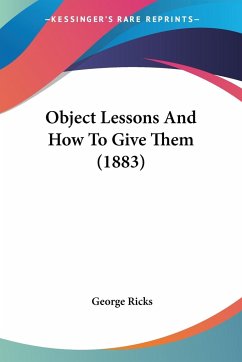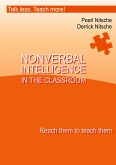Fuchang Liu
Common Mistakes in Teaching Elementary Math--And How to Avoid Them
Fuchang Liu
Common Mistakes in Teaching Elementary Math--And How to Avoid Them
- Gebundenes Buch
- Merkliste
- Auf die Merkliste
- Bewerten Bewerten
- Teilen
- Produkt teilen
- Produkterinnerung
- Produkterinnerung
Learn the most effective ways to teach elementary math, no matter how much experience you have with the subject.
Andere Kunden interessierten sich auch für
![20 Biggest Mistakes Principals Make and How to Avoid Them 20 Biggest Mistakes Principals Make and How to Avoid Them]() Marilyn L. Grady20 Biggest Mistakes Principals Make and How to Avoid Them29,99 €
Marilyn L. Grady20 Biggest Mistakes Principals Make and How to Avoid Them29,99 €![20 Biggest Mistakes Principals Make and How to Avoid Them 20 Biggest Mistakes Principals Make and How to Avoid Them]() Marilyn L. Grady20 Biggest Mistakes Principals Make and How to Avoid Them58,99 €
Marilyn L. Grady20 Biggest Mistakes Principals Make and How to Avoid Them58,99 €![199 Mistakes New 7th 12th Grade Teachers Make and How to Prevent Them 199 Mistakes New 7th 12th Grade Teachers Make and How to Prevent Them]() Atlantic Publishing Group Inc.199 Mistakes New 7th 12th Grade Teachers Make and How to Prevent Them18,99 €
Atlantic Publishing Group Inc.199 Mistakes New 7th 12th Grade Teachers Make and How to Prevent Them18,99 €![Object Lessons And How To Give Them (1883) Object Lessons And How To Give Them (1883)]() George RicksObject Lessons And How To Give Them (1883)26,99 €
George RicksObject Lessons And How To Give Them (1883)26,99 €![Intelligence in the Classroom - Reach them to teach them Intelligence in the Classroom - Reach them to teach them]() Pearl NitscheIntelligence in the Classroom - Reach them to teach them32,00 €
Pearl NitscheIntelligence in the Classroom - Reach them to teach them32,00 €![Intelligence in the Classroom - Reach them to teach them Intelligence in the Classroom - Reach them to teach them]() Pearl NitscheIntelligence in the Classroom - Reach them to teach them25,00 €
Pearl NitscheIntelligence in the Classroom - Reach them to teach them25,00 €![Goops and How to be Them Goops and How to be Them]() Gelett BurgessGoops and How to be Them31,99 €
Gelett BurgessGoops and How to be Them31,99 €-
-
-
Learn the most effective ways to teach elementary math, no matter how much experience you have with the subject.
Produktdetails
- Produktdetails
- Verlag: Taylor & Francis
- Seitenzahl: 172
- Erscheinungstermin: 22. März 2017
- Englisch
- Gewicht: 498g
- ISBN-13: 9781138201453
- ISBN-10: 1138201456
- Artikelnr.: 49005464
- Herstellerkennzeichnung
- Libri GmbH
- Europaallee 1
- 36244 Bad Hersfeld
- gpsr@libri.de
- Verlag: Taylor & Francis
- Seitenzahl: 172
- Erscheinungstermin: 22. März 2017
- Englisch
- Gewicht: 498g
- ISBN-13: 9781138201453
- ISBN-10: 1138201456
- Artikelnr.: 49005464
- Herstellerkennzeichnung
- Libri GmbH
- Europaallee 1
- 36244 Bad Hersfeld
- gpsr@libri.de
Fuchang Liu is Associate Professor of Mathematics Education at Wichita State University. Previously, he taught high school math in Louisiana and Texas.
Meet the Author
Preface
Chapter 1 Counting
Counting Shouldn't Start at 0
What Are Tally Marks for?
It May Not Be Fast-The Purpose of Skip-Counting
Our Number System Is Base-Ten, Not Base-Twelve
Chapter 2 Number Properties
A Red Marble Isn't More Than a Blue One
Playing Cards and Dice Aren't Ideal Things to Make Multidigit Numbers With
It's Odd Not to Consider 0 as Even
14 and 37 Don't Belong in the Same List
Chapter 3 Addition
4 + 4 Isn't Simply 8 Bars Put Together
Make Pictorial Representations More Than a "Literal" Translation
Don't Hop From Square One
You Can't Add Apples and Oranges Together
Chapter 4 Subtraction
Don't Make the Kittens Disappear
Don't Ever Say "Subtract the Smaller Number From the Larger One"
"Neither a Borrower nor a Lender Be"-Why We Shouldn't Borrow
Can We Subtract a Larger Number From a Smaller One?
10 + 5 - 8 = 15 - 8: No Way to Make It Simpler?
Chapter 5 Multiplication
The Formidable 169-Cell Multiplication Table
"You Must Put a Zero in the Ones Place"
Can You Move Over One Place Value?
Line Multiplication: Why It Won't Work
Chapter 6 Division
The Bigger Number Doesn't Always Go Inside
What's 0 ¿ 0?
Division Isn't Always Repeated Subtraction
"Dad, Mom, Sister, Brother, Rover": Where Is Dad?
Divide Doesn't Always Yield a Smaller Number
Chapter 7 The Order of Operations
Aunt Sally Is Evil - The Order of Operations
The Order "M/D Before A/S" Isn't Haphazard
Are Negative and Subtract Really Different?
Chapter 8 Algebra
An Equal Sign Means Equal
What Does Adding Up Numbers Landed Have to Do With Finding Factors?
Timelines Aren't Good Candidates for Teaching Negative Numbers
The Worst Example in Teaching Exponents
Chapter 9 Geometry: Bits and Pieces
Don't Count the Diagonals on a Grid
"All 3-D Shapes Have an Extra Third Dimension of Height"
Don't Use "Vertical" to Find the Horizontal Value
The Two Sides of a Symmetrical Figure Aren't Exactly the Same
Don't Use Tiles to Figure Out the Perimeter
Chapter 10 Geometry: Common Geometric Figures
Length Doesn't Necessarily Mean Longer
A Rectangle's Orientation Doesn't Matter Either
"A Rectangle Has Two Longer Sides and Two Shorter Sides"
What's Wrong With Saying "Triangles, Rectangles, Squares, and Hexagons"?
Base Doesn't Necessarily Mean "Side at Bottom"
Three Sides Don't Necessarily Make a Triangle
How Many Sides Does a Circle Have?
Chapter 11 Time-Telling
"A Quarter in Time Means 15"
Does 1 on Analog Clocks Mean 5 Minutes?
"Why Does the Time on My Analog Clock Look Weird?"
Which Hand Pointing to 12 Makes 12 O'clock?
Why We Shouldn't Jump Around Between 8:00 and 9:00
Chapter 12 Fractions
A Condition for Using Fractions: Equivalent Parts
"Bottom Number" and "Top Number" Aren't Nearly Sufficient
for Defining Denominators and Numerators
What Does 1/2x Mean?
A Fraction Doesn't Address "How Many"
Denominators Should Be Substantially Different for Easy Comparison
Percentage Shouldn't Be Juxtaposed With Fractions and Decimals
Chapter 13 Decimals
Changing the Value Scheme of Base-10 Blocks Not a Good Idea
When Is It Appropriate to Read a Decimal as a Fraction?
25.0 and 25 Aren't Exactly the Same
Keep a Few More Decimal Places
When Rounding at Intermediate Steps
Chapter 14 Simple Statistics and Graphs
Were the Children in Your Class Born, on Average, on the 12.8th?
"The Mean Is the Average"
Where in the World Does the Mode Ever Get Used?
Do All Your Children Have an Equal Chance of Winning?
Use Different Types of Data for a Beginning Lesson on Graphs
Chapter 15 Measurement
Why Do We Need Nonstandard Measurement?
What Is Standard Measurement?
What Are Centimeters Used to Measure?
Leave Out Units of Measure at Intermediate Steps
How Do You Say the Word for "1000 Meters"?
Fractions Don't Belong With Metric Measurements
Chapter 16 Computational Estimation
Is Computational Estimation an Educated Guess?
Are All Estimates Good Ones?
How Practical Is an Estimate If It Takes Four Minutes?
Be Extremely Careful When Rounding Single-Digit Numbers
There Is Often More Than One Way to Round a Number
Chapter 17 Odds and Ends
Appendix: Suggestions for Using Common Mistakes in Teaching Elementary
Math with Study Groups
Preface
Chapter 1 Counting
Counting Shouldn't Start at 0
What Are Tally Marks for?
It May Not Be Fast-The Purpose of Skip-Counting
Our Number System Is Base-Ten, Not Base-Twelve
Chapter 2 Number Properties
A Red Marble Isn't More Than a Blue One
Playing Cards and Dice Aren't Ideal Things to Make Multidigit Numbers With
It's Odd Not to Consider 0 as Even
14 and 37 Don't Belong in the Same List
Chapter 3 Addition
4 + 4 Isn't Simply 8 Bars Put Together
Make Pictorial Representations More Than a "Literal" Translation
Don't Hop From Square One
You Can't Add Apples and Oranges Together
Chapter 4 Subtraction
Don't Make the Kittens Disappear
Don't Ever Say "Subtract the Smaller Number From the Larger One"
"Neither a Borrower nor a Lender Be"-Why We Shouldn't Borrow
Can We Subtract a Larger Number From a Smaller One?
10 + 5 - 8 = 15 - 8: No Way to Make It Simpler?
Chapter 5 Multiplication
The Formidable 169-Cell Multiplication Table
"You Must Put a Zero in the Ones Place"
Can You Move Over One Place Value?
Line Multiplication: Why It Won't Work
Chapter 6 Division
The Bigger Number Doesn't Always Go Inside
What's 0 ¿ 0?
Division Isn't Always Repeated Subtraction
"Dad, Mom, Sister, Brother, Rover": Where Is Dad?
Divide Doesn't Always Yield a Smaller Number
Chapter 7 The Order of Operations
Aunt Sally Is Evil - The Order of Operations
The Order "M/D Before A/S" Isn't Haphazard
Are Negative and Subtract Really Different?
Chapter 8 Algebra
An Equal Sign Means Equal
What Does Adding Up Numbers Landed Have to Do With Finding Factors?
Timelines Aren't Good Candidates for Teaching Negative Numbers
The Worst Example in Teaching Exponents
Chapter 9 Geometry: Bits and Pieces
Don't Count the Diagonals on a Grid
"All 3-D Shapes Have an Extra Third Dimension of Height"
Don't Use "Vertical" to Find the Horizontal Value
The Two Sides of a Symmetrical Figure Aren't Exactly the Same
Don't Use Tiles to Figure Out the Perimeter
Chapter 10 Geometry: Common Geometric Figures
Length Doesn't Necessarily Mean Longer
A Rectangle's Orientation Doesn't Matter Either
"A Rectangle Has Two Longer Sides and Two Shorter Sides"
What's Wrong With Saying "Triangles, Rectangles, Squares, and Hexagons"?
Base Doesn't Necessarily Mean "Side at Bottom"
Three Sides Don't Necessarily Make a Triangle
How Many Sides Does a Circle Have?
Chapter 11 Time-Telling
"A Quarter in Time Means 15"
Does 1 on Analog Clocks Mean 5 Minutes?
"Why Does the Time on My Analog Clock Look Weird?"
Which Hand Pointing to 12 Makes 12 O'clock?
Why We Shouldn't Jump Around Between 8:00 and 9:00
Chapter 12 Fractions
A Condition for Using Fractions: Equivalent Parts
"Bottom Number" and "Top Number" Aren't Nearly Sufficient
for Defining Denominators and Numerators
What Does 1/2x Mean?
A Fraction Doesn't Address "How Many"
Denominators Should Be Substantially Different for Easy Comparison
Percentage Shouldn't Be Juxtaposed With Fractions and Decimals
Chapter 13 Decimals
Changing the Value Scheme of Base-10 Blocks Not a Good Idea
When Is It Appropriate to Read a Decimal as a Fraction?
25.0 and 25 Aren't Exactly the Same
Keep a Few More Decimal Places
When Rounding at Intermediate Steps
Chapter 14 Simple Statistics and Graphs
Were the Children in Your Class Born, on Average, on the 12.8th?
"The Mean Is the Average"
Where in the World Does the Mode Ever Get Used?
Do All Your Children Have an Equal Chance of Winning?
Use Different Types of Data for a Beginning Lesson on Graphs
Chapter 15 Measurement
Why Do We Need Nonstandard Measurement?
What Is Standard Measurement?
What Are Centimeters Used to Measure?
Leave Out Units of Measure at Intermediate Steps
How Do You Say the Word for "1000 Meters"?
Fractions Don't Belong With Metric Measurements
Chapter 16 Computational Estimation
Is Computational Estimation an Educated Guess?
Are All Estimates Good Ones?
How Practical Is an Estimate If It Takes Four Minutes?
Be Extremely Careful When Rounding Single-Digit Numbers
There Is Often More Than One Way to Round a Number
Chapter 17 Odds and Ends
Appendix: Suggestions for Using Common Mistakes in Teaching Elementary
Math with Study Groups
Meet the Author
Preface
Chapter 1 Counting
Counting Shouldn't Start at 0
What Are Tally Marks for?
It May Not Be Fast-The Purpose of Skip-Counting
Our Number System Is Base-Ten, Not Base-Twelve
Chapter 2 Number Properties
A Red Marble Isn't More Than a Blue One
Playing Cards and Dice Aren't Ideal Things to Make Multidigit Numbers With
It's Odd Not to Consider 0 as Even
14 and 37 Don't Belong in the Same List
Chapter 3 Addition
4 + 4 Isn't Simply 8 Bars Put Together
Make Pictorial Representations More Than a "Literal" Translation
Don't Hop From Square One
You Can't Add Apples and Oranges Together
Chapter 4 Subtraction
Don't Make the Kittens Disappear
Don't Ever Say "Subtract the Smaller Number From the Larger One"
"Neither a Borrower nor a Lender Be"-Why We Shouldn't Borrow
Can We Subtract a Larger Number From a Smaller One?
10 + 5 - 8 = 15 - 8: No Way to Make It Simpler?
Chapter 5 Multiplication
The Formidable 169-Cell Multiplication Table
"You Must Put a Zero in the Ones Place"
Can You Move Over One Place Value?
Line Multiplication: Why It Won't Work
Chapter 6 Division
The Bigger Number Doesn't Always Go Inside
What's 0 ¿ 0?
Division Isn't Always Repeated Subtraction
"Dad, Mom, Sister, Brother, Rover": Where Is Dad?
Divide Doesn't Always Yield a Smaller Number
Chapter 7 The Order of Operations
Aunt Sally Is Evil - The Order of Operations
The Order "M/D Before A/S" Isn't Haphazard
Are Negative and Subtract Really Different?
Chapter 8 Algebra
An Equal Sign Means Equal
What Does Adding Up Numbers Landed Have to Do With Finding Factors?
Timelines Aren't Good Candidates for Teaching Negative Numbers
The Worst Example in Teaching Exponents
Chapter 9 Geometry: Bits and Pieces
Don't Count the Diagonals on a Grid
"All 3-D Shapes Have an Extra Third Dimension of Height"
Don't Use "Vertical" to Find the Horizontal Value
The Two Sides of a Symmetrical Figure Aren't Exactly the Same
Don't Use Tiles to Figure Out the Perimeter
Chapter 10 Geometry: Common Geometric Figures
Length Doesn't Necessarily Mean Longer
A Rectangle's Orientation Doesn't Matter Either
"A Rectangle Has Two Longer Sides and Two Shorter Sides"
What's Wrong With Saying "Triangles, Rectangles, Squares, and Hexagons"?
Base Doesn't Necessarily Mean "Side at Bottom"
Three Sides Don't Necessarily Make a Triangle
How Many Sides Does a Circle Have?
Chapter 11 Time-Telling
"A Quarter in Time Means 15"
Does 1 on Analog Clocks Mean 5 Minutes?
"Why Does the Time on My Analog Clock Look Weird?"
Which Hand Pointing to 12 Makes 12 O'clock?
Why We Shouldn't Jump Around Between 8:00 and 9:00
Chapter 12 Fractions
A Condition for Using Fractions: Equivalent Parts
"Bottom Number" and "Top Number" Aren't Nearly Sufficient
for Defining Denominators and Numerators
What Does 1/2x Mean?
A Fraction Doesn't Address "How Many"
Denominators Should Be Substantially Different for Easy Comparison
Percentage Shouldn't Be Juxtaposed With Fractions and Decimals
Chapter 13 Decimals
Changing the Value Scheme of Base-10 Blocks Not a Good Idea
When Is It Appropriate to Read a Decimal as a Fraction?
25.0 and 25 Aren't Exactly the Same
Keep a Few More Decimal Places
When Rounding at Intermediate Steps
Chapter 14 Simple Statistics and Graphs
Were the Children in Your Class Born, on Average, on the 12.8th?
"The Mean Is the Average"
Where in the World Does the Mode Ever Get Used?
Do All Your Children Have an Equal Chance of Winning?
Use Different Types of Data for a Beginning Lesson on Graphs
Chapter 15 Measurement
Why Do We Need Nonstandard Measurement?
What Is Standard Measurement?
What Are Centimeters Used to Measure?
Leave Out Units of Measure at Intermediate Steps
How Do You Say the Word for "1000 Meters"?
Fractions Don't Belong With Metric Measurements
Chapter 16 Computational Estimation
Is Computational Estimation an Educated Guess?
Are All Estimates Good Ones?
How Practical Is an Estimate If It Takes Four Minutes?
Be Extremely Careful When Rounding Single-Digit Numbers
There Is Often More Than One Way to Round a Number
Chapter 17 Odds and Ends
Appendix: Suggestions for Using Common Mistakes in Teaching Elementary
Math with Study Groups
Preface
Chapter 1 Counting
Counting Shouldn't Start at 0
What Are Tally Marks for?
It May Not Be Fast-The Purpose of Skip-Counting
Our Number System Is Base-Ten, Not Base-Twelve
Chapter 2 Number Properties
A Red Marble Isn't More Than a Blue One
Playing Cards and Dice Aren't Ideal Things to Make Multidigit Numbers With
It's Odd Not to Consider 0 as Even
14 and 37 Don't Belong in the Same List
Chapter 3 Addition
4 + 4 Isn't Simply 8 Bars Put Together
Make Pictorial Representations More Than a "Literal" Translation
Don't Hop From Square One
You Can't Add Apples and Oranges Together
Chapter 4 Subtraction
Don't Make the Kittens Disappear
Don't Ever Say "Subtract the Smaller Number From the Larger One"
"Neither a Borrower nor a Lender Be"-Why We Shouldn't Borrow
Can We Subtract a Larger Number From a Smaller One?
10 + 5 - 8 = 15 - 8: No Way to Make It Simpler?
Chapter 5 Multiplication
The Formidable 169-Cell Multiplication Table
"You Must Put a Zero in the Ones Place"
Can You Move Over One Place Value?
Line Multiplication: Why It Won't Work
Chapter 6 Division
The Bigger Number Doesn't Always Go Inside
What's 0 ¿ 0?
Division Isn't Always Repeated Subtraction
"Dad, Mom, Sister, Brother, Rover": Where Is Dad?
Divide Doesn't Always Yield a Smaller Number
Chapter 7 The Order of Operations
Aunt Sally Is Evil - The Order of Operations
The Order "M/D Before A/S" Isn't Haphazard
Are Negative and Subtract Really Different?
Chapter 8 Algebra
An Equal Sign Means Equal
What Does Adding Up Numbers Landed Have to Do With Finding Factors?
Timelines Aren't Good Candidates for Teaching Negative Numbers
The Worst Example in Teaching Exponents
Chapter 9 Geometry: Bits and Pieces
Don't Count the Diagonals on a Grid
"All 3-D Shapes Have an Extra Third Dimension of Height"
Don't Use "Vertical" to Find the Horizontal Value
The Two Sides of a Symmetrical Figure Aren't Exactly the Same
Don't Use Tiles to Figure Out the Perimeter
Chapter 10 Geometry: Common Geometric Figures
Length Doesn't Necessarily Mean Longer
A Rectangle's Orientation Doesn't Matter Either
"A Rectangle Has Two Longer Sides and Two Shorter Sides"
What's Wrong With Saying "Triangles, Rectangles, Squares, and Hexagons"?
Base Doesn't Necessarily Mean "Side at Bottom"
Three Sides Don't Necessarily Make a Triangle
How Many Sides Does a Circle Have?
Chapter 11 Time-Telling
"A Quarter in Time Means 15"
Does 1 on Analog Clocks Mean 5 Minutes?
"Why Does the Time on My Analog Clock Look Weird?"
Which Hand Pointing to 12 Makes 12 O'clock?
Why We Shouldn't Jump Around Between 8:00 and 9:00
Chapter 12 Fractions
A Condition for Using Fractions: Equivalent Parts
"Bottom Number" and "Top Number" Aren't Nearly Sufficient
for Defining Denominators and Numerators
What Does 1/2x Mean?
A Fraction Doesn't Address "How Many"
Denominators Should Be Substantially Different for Easy Comparison
Percentage Shouldn't Be Juxtaposed With Fractions and Decimals
Chapter 13 Decimals
Changing the Value Scheme of Base-10 Blocks Not a Good Idea
When Is It Appropriate to Read a Decimal as a Fraction?
25.0 and 25 Aren't Exactly the Same
Keep a Few More Decimal Places
When Rounding at Intermediate Steps
Chapter 14 Simple Statistics and Graphs
Were the Children in Your Class Born, on Average, on the 12.8th?
"The Mean Is the Average"
Where in the World Does the Mode Ever Get Used?
Do All Your Children Have an Equal Chance of Winning?
Use Different Types of Data for a Beginning Lesson on Graphs
Chapter 15 Measurement
Why Do We Need Nonstandard Measurement?
What Is Standard Measurement?
What Are Centimeters Used to Measure?
Leave Out Units of Measure at Intermediate Steps
How Do You Say the Word for "1000 Meters"?
Fractions Don't Belong With Metric Measurements
Chapter 16 Computational Estimation
Is Computational Estimation an Educated Guess?
Are All Estimates Good Ones?
How Practical Is an Estimate If It Takes Four Minutes?
Be Extremely Careful When Rounding Single-Digit Numbers
There Is Often More Than One Way to Round a Number
Chapter 17 Odds and Ends
Appendix: Suggestions for Using Common Mistakes in Teaching Elementary
Math with Study Groups








